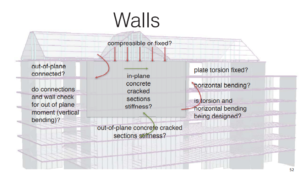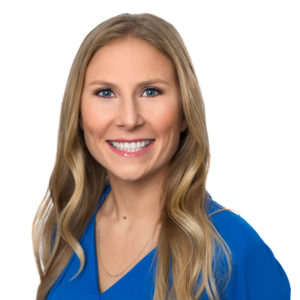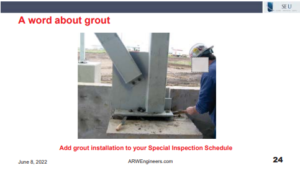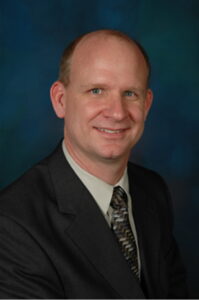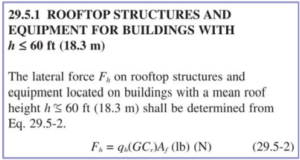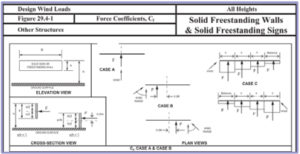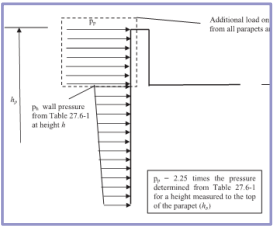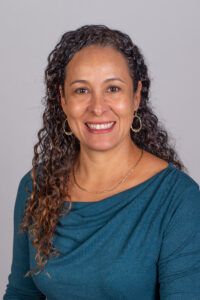18 Nov / 2022
Stiffness Modifiers in FEM
How do you establish appropriate cracked section factors for your structural elements when modeling reinforced concrete structures? Do you typically follow ACI, assume everything is cracked, run the model, and call it a day? How can you be sure the stiffness modifiers you selected for your structural elements mimic reality?
In the September 2022 SEU session, Sam Rubenzer, PE, SE, from FORSE Consulting, presented Verifying Software Results to our SEU group. Sam explained some methods used in software for load generation and how to verify their accuracy. He showed how to develop methods to determine what to expect from analysis results and ways to create checklists to assist with finding modeling or analysis errors. He also covered code checks performed by software programs and highlighted items that are not checked.
Sam noted that a prudent approach to verifying software results includes establishing simple models to approximate results and then moving toward a more complex product to compare with the original model results. For engineers using finite element modeling for reinforced reinforced concrete buildings, this task involves assigning effective stiffness factors for various structural elements. Some engineers assign the same cracked factors based on element type, but this simplification could be inaccurate in some instances. Sam recommended an article which identifies the importance of establishing accurate cracked section factors during analysis. Effective Stiffness for Modeling Reinforced Concrete Structures, by John-Michael Wong, PhD, SE, Angie Sommer, SE, Katy Briggs, SE, and Cenk Ergin, PE, appeared in Structure Magazine in January 2017. Within the article, a useful table presents the various stiffness modifiers for elements for many different building codes throughout the world. This table highlights the complexity that is inherent in attempting to accurately model these structural elements in analysis software and how a more detailed level of thought is required to produce an accurate building model.
The following slide shows one example from Sam’s presentation of a building wall and the many considerations that should be taken when modeling. What is the purpose of the wall? Is it being used more in bending, shear or axial? Sam noted the engineer should consider the fixity, bracing and purpose of the element when modeling in software and some elements may need varying stiffness factors for in-plane and out–of-plane loads.
Since cracked section factors significantly affect the results of software analysis, engineers need to understand the importance of selecting appropriate factors for their structural elements. This process can be iterative since the assumed stiffness of various elements influences the dynamic response of the structure and can change the results of the analysis and the effective stiffness. As Sam suggested, moving toward a more complex model that mimics reality should be a reasonable exercise, however, modeling an exact replica with each element having a unique cracked section factor would be inefficient. This article offers guidance from various building codes on appropriate cracked section factors and should be a quick reference when developing complex finite element models.
10 Nov / 2022
“SEU Speaker Inspires” Organization of the Month: NCSEA Diversity in Structural Engineering Scholarship
In May 2022, SEU welcomed back Emily Guglielmo, SE, PE, from Martin/Martin, to present Wind Loads: Updated Frequently Asked Questions. Emily has designated NCSEA Diversity in Structural Engineering Scholarship (NCSEA Diversity in Structural Engineering Scholarship) for our SEU Speaker Inspires donation for the month.
Emily shared, “I chose the NCSEA Diversity in Structural Engineering Scholarship because I believe we must do a better job to encourage the next generation, regardless of race, gender, or socioeconomic background, that structural engineering is a viable career option for them.”
Thank you, Emily, for helping structural engineers with your SEU session, and for your designation of NCSEA Diversity in Structural Engineering Scholarship as our SEU Speaker Inspires Organization of the Month!
SEU began the SEU Speaker Inspires program in 2015 as a way to “pay it forward”, enabling our speakers to designate a charity/organization of their choice for SEU to make a donation to help improve our world.
25 Sep / 2022
Importance of Grout in Baseplate Design
How much consideration do you give to the type of grout used for your baseplates? Do you stop short after specifying a given compressive strength, or do you consider the stiffness of the grout mix design? Do you ensure the grout is placed well in the field, according to your construction documents?
In the June 2022 SEU session, Barry Arnold, PE, SE, from ARW Engineers, presented Baseplates, Embeds, and Disasters, Oh My! Barry explained the design parameters that affect the performance of baseplates and embeds and showed how even small changes to the design parameters can have huge impacts on the performance of, and the stresses in, anchor rods, baseplates, columns and gusset plates.
Barry noted that the column base connection detail is one of the most important elements in steel structures. The code requires that “the designer should use caution and good judgment… for this very important class of connection.” Designers often use software to model these connections which requires the input of a spring constant, k, for the grout beneath the baseplate. To hear Barry explain the importance of using an accurate spring constant, watch this short 3 minute video:
https://vimeo.com/743533766
Also, Barry stressed the importance of the placement and performance of the grout beneath the column base plate, and noted that this item is often overlooked considering how critical it is to the column base connection. Grout beds are notoriously littered with debris and large voids. As you can see in this slide, Barry suggested this important action item be added to your special inspection schedule, given the critical role the grout plays in the performance of your lateral load bearing columns to prevent situations such as the one shown on the slide.
Using an incorrect spring constant value or poor grout installation could cause unintended stresses to develop which could lead to disaster down the road. Paying closer attention to the grout properties and installation are critical to achieving a connection that performs the way the designer intends.
25 Sep / 2022
“SEU Speaker Inspires” Organization of the Month: Penn State Women in Engineering Fund
In July 2022, SEU welcomed Lori Koch, PE, from American Wood Council, to present Special Design Provisions for Wind and Seismic (SDPWS) 2021 Updates. Lori has designated Penn State Women in Engineering Fund (Penn State Engineering: Women in Engineering Program (psu.edu)) for our SEU Speaker Inspires donation for the month.
Lori shared, “I chose this organization because I’m an alumna of the Penn State Women in Engineering Program, and I value the work they do towards making the engineering profession more inclusive. They promote engineering to girls and women of all ages, and the Women in Engineering Program Orientation I did before starting freshman year remains one of my favorite Penn State memories!”
Thank you, Lori, for helping structural engineers with your SEU session, and for your designation of Penn State Women in Engineering Fund as our SEU Speaker Inspires Organization of the Month!
SEU began the SEU Speaker Inspires program in 2015 as a way to “pay it forward”, enabling our speakers to designate a charity/organization of their choice for SEU to make a donation to help improve our world.
26 Aug / 2022
Wind Loads on Balcony Handrails
Balcony handrails are commonplace for large residential buildings, and they come in a variety of forms. While some are solid glass or metal, others may be more porous in nature, thus the design of these appurtenances for wind becomes more complex.
In the May 2022 SEU Session, Emily Guglielmo, SE, PE, from Martin/Martin Inc., presented Wind Loads: Updated Frequently Asked Questions. Emily explained how to deal with commonly encountered wind load situations that are not fully addressed in the code. She also identified the latest code updates and examined some complicated wind load provisions and how they relate to real world examples.
Emily noted that the most frequently asked question in regard to wind pressures that she receives is which wind load should be applied to these common balcony handrails. To hear her explanation for a reasonable rationale for the design of handrails, watch this short 4 minute video:
Using this approach, engineers can more accurately determine if the geometry of the handrail will induce a suction pressure on the leeward side, or whether the handrail acts more like a solid windward wall on the face of the building. Emily also provided an excellent resource to justify a reduction in the windward surface area for perforated materials which was developed by the chain link fence industry. This document indicates that a reduction can be taken unless the porosity of the material is less than 10% which would require the area be assumed solid.
Emily’s guidance helps clarify this often murky subject since the code does not give clear answers on wind loads for balcony handrails, and using the porosity of the material may help reduce these wind loads when applicable.
26 Aug / 2022
2021 SDPWS Highlight: CLT Now Included
Are you aware of the new additions to the 2021 Special Design Provisions for Wind and Seismic (SDPWS)? Several changes have been incorporated in the 2021 edition, which is the first revision since 2015 for this IBC-referenced document. The provisions were developed by AWC’s Wood Design Standards Committee, and new sections have been added to Chapter 4 to include more guidance when using cross-laminated timber (CLT).
In the July 2022 SEU session, Lori Koch, PE, from American Wood Council, presented Special Design Provisions for Wind and Seismic (SDPWS) 2021 Updates. Lori identified the major changes between the 2021 SDPWS and previous editions. She highlighted the new format for the shear wall and diaphragm capacity tables and described the new table for out-of-plane wind resistance for OSB and plywood wall and roof sheathing. Also, she introduced the new shear wall and diaphragm provisions for cross-laminated timber (CLT).
Lori noted that Chapter 4 of SDPWS now contains sections 4.5 Cross-Laminated Timber (CLT) Diaphragms and 4.6 Cross-Laminated (CLT) Shear Walls. Section 4.5 is a one-page standard whose requirements are largely an engineered approach which references the National Design Specification (NDS) for the design of CLT diaphragms.
Section 4.6 references the newly added Appendix B for design provisions applicable for wind and seismic. Appendix B includes the mandatory requirements for CLT shear walls and defines two systems: CLT shear wall and CLT shear wall with shear resistance provided by high aspect ratio panels only. The requirements mandate platform construction where CLT floor panels bear on CLT walls below. There are limits to the aspect ratio of the panels and which connectors may be used, and uplift due to overturning must be resisted by hold-downs. There is an exception to the requirements in Appendix B for buildings in low seismic hazard areas which do not exceed 65 feet in height.
Lori noted that extensive testing to CLT shear walls was conducted in accordance with FEMA P-695 in order to identify seismic performance factors of CLT shear walls as a new seismic force resisting system (SFRS). The methodology used is consistent with the primary “life safety” performance objective of seismic regulations in model building codes. To view the results of this FEMA P-695 report, click here.
With the addition of the CLT sections to the 2021 SDPWS, engineers now have a codified standard for use in their wood structures. To download the new updates to the 2021 SDPWS or to purchase your own copy, click visit the AWC website.
26 Aug / 2022
“SEU Speaker Inspires” Organization of the Month: Structural Engineers Association of Utah Scholarship Fund
In June 2022, SEU welcomed Barry Arnold, PE, SE, from ARW Engineers, to present Base Plates, Embeds, and Disasters, Oh My! Barry has designated Structural Engineers Association of Utah Scholarship Fund (Structural Engineers Association of Utah – Scholarships (seau.org)) for our SEU Speaker Inspires donation for the month.
Barry shared, “As a student struggling to pay for tuition and books, attending classes, completing homework, maintaining a good family life, and working full-time, I remember how grateful I was to receive a scholarship. Receiving a scholarship reduced my anxiety and the pressure I felt by easing my financial burdens. I hope whoever receives this scholarship will benefit from the financial assistance as I did when I was a student.”
Thank you, Barry, for helping structural engineers with your SEU session, and for your designation of Structural Engineers Association of Utah Scholarship Fund as our SEU Speaker Inspires Organization of the Month!
SEU began the SEU Speaker Inspires program in 2015 as a way to “pay it forward”, enabling our speakers to designate a charity/organization of their choice for SEU to make a donation to help improve our world.
18 Jul / 2022
Wind Loads on Rooftop Screenwalls
Which ASCE provision do you typically use when designing a rooftop screenwall for wind loads? Several options have been used by structural engineers in the past, but the best option has been debatable since the code has not explicitly spoken on the subject. New guidance in ASCE 7-16 helps clarify this frequently asked question.
In the May 2022 SEU Session, Emily Guglielmo, SE, PE, from Martin/Martin Inc., presented Wind Loads: Updated Frequently Asked Questions. Emily explained how to deal with commonly encountered wind load situations that are not fully addressed in the code. She also identified the latest code updates and examined some complicated wind load provisions and how they relate to real world examples.
One of the most frequently asked questions, in regard to wind load provisions, is what wind load should engineers use for a roof top screen wall or equipment? Emily noted that while there are several commonly used provisions for these calculations, there is an approach that may be considered ‘more right’ than others. Typically, engineers have used one of the following three different options for determining the wind loads on rooftop screen walls:
A. Rooftop Structures and Equipment
B. Solid Freestanding Signs
C. Parapet Pressures
While Emily noted that none of these approaches are necessarily incorrect, the code now offers some guidance in the commentary:
New to the commentary in ASCE7-16, C29.4.1 states that “Mechanical equipment screens… located away from the edge of the building roof such that they are not considered parapets…” should use the wind load determined with Section 29.4.1. This statement implies that if the screen is located near the edge of the roof, that perhaps a parapet pressure might be more appropriate. Emily noted that it would be reasonable to conclude that if the screen wall falls within the typical rooftop wind zone, then Sections 29.4.1 should be applied and when the screen falls within an edge or corner zone, a parapet pressure could be more appropriate.
This new addition to the commentary with the 2016 revision helps provide more clarity to this frequently asked question, and engineers now have more guidance for common rooftop screens and equipment.
18 Jul / 2022
“SEU Speaker Inspires” Organization of the Month: GRAACC Support Group for Adolescents and Children with Cancer
In April 2022, SEU welcomed Carine Magalhaes Leys, from Odeh Engineers, to present 2022 Post-Tensioning Design: Finite Element Method-Based Solutions. Carine has designated GRAACC Support Group for Adolescents and Children with Cancer in Brazil (https://www.globalgiving.org/projects/better-chances-of-cure-for-childhood-cancer-in-br/) for our SEU Speaker Inspires donation for the month.
Carine wished to support children in Brazil where there is an estimated 16,000 new cases of cancer in every 100.000 children and adolescents. Cancer is the first leading cause of death by disease in the population up to 19 years old. The GRAACC manages and maintains a hospital that offers diagnostic, treatment and after treatment for children and adolescents with cancer in Brazil.
Thank you, Carine, for helping structural engineers with your SEU session, and for your designation of GRAACC Support Group for Adolescents and Children with Cancer as our SEU Speaker Inspires Organization of the Month!
SEU began the SEU Speaker Inspires program in 2015 as a way to “pay it forward”, enabling our speakers to designate a charity/organization of their choice for SEU to make a donation to help improve our world.
30 Jun / 2022
Resources for Improving Leadership Skills
Natural born leaders are a rare breed, but many skills needed to empower and motivate teams can be learned and improved. However, it takes great intentionality to make meaningful change. Changing patterns and behaviors can be a challenge, but learning the art of building successful working relationships will pay dividends over the course of a career. Check out these helpful articles and resources which aim to identify excellent leadership qualities and tips to hone your skills:
5 Traits That Will Instantly Point to Someone With Bad Leadership Skills | Inc.com
Why The Distinction Between Leader And Manager Matters (forbes.com)
How Can You Be Sure Someone Has What It Takes to Lead People? Look for 4 Rare Habits | Inc.com
9 Skills to Manage Your Team | Blog.SHRM.org
The Leadership Skills To Be Learned From Parenting – Young Upstarts

